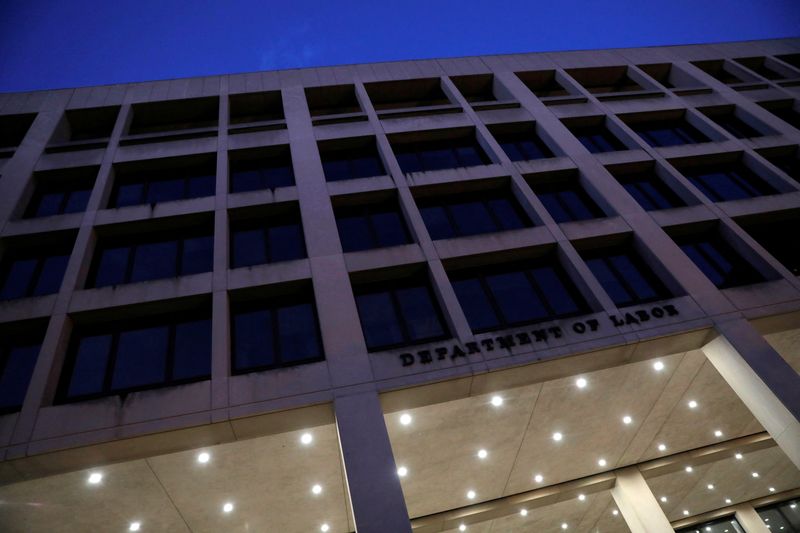US worker absences highlight mixed labor market as pandemic recedes
2024.01.05 14:22

© Reuters. FILE PHOTO: The Department of Labor headquarters is seen in Washington, D.C., U.S., May 13, 2021. REUTERS/Andrew Kelly/File Photo
(Reuters) – The latest government data on Friday showed the U.S. added 216,000 jobs in December, as the labor market settles back towards more normal levels following almost four years of upheaval caused by the COVID-19 pandemic.
Figures on worker absences that accompany the U.S. Labor Department’s monthly employment report, derived from a separate monthly survey of households, show both the rebound from, and the lingering impact of, the health crisis. While the data are not seasonally adjusted, the trend lines are clear.
DATA ON ABSENCES MIXED
The number of workers who were absent due to illness, injury, a medical problem or appointment reached a peak of 7.8 million in January 2022 as a normalizing labor market collided with a spike in COVID-19 cases caused by the more transmissible Omicron variant. About one million infections were reported per day that month.
There were still about 29,000 hospitalizations in the U.S. due to the virus in the week before Christmas last year, according to the Centers for Disease Control and Prevention, while there have been an average of 1,400 deaths per week since the Thanksgiving holiday. Still, that’s fewer than half of the number of deaths for the same period last year.
The absence level from work for illness or injury-related reasons was almost 25% lower last month than a year ago. Overall, there was a large decline in the number of people who missed work for those reasons in 2023, although the figure for those who usually work full-time but had to work part-time due to illness, while falling, remains elevated.
CHILDCARE PROBLEMS REMAIN
The pandemic played havoc with childcare, as schools moved to virtual learning or stopped lessons altogether for a prolonged period, and some daycare centers shuttered for healthcare reasons, a lack of income or staffing shortages. Since the crisis abated and schools resumed in-person learning, the number of people reporting missing work due to childcare problems has fallen. Childcare issues, however, remain as demand for early childhood centers outstrips supply and childcare often costs more than many parents can afford.
The number of people who missed work entirely or had to work part-time due to childcare issues fell sharply in December despite concerns about a “childcare cliff” in the fourth quarter after pandemic-era government support for childcare expired.
However, the latest figures show the number of people who missed work due to childcare problems remains higher than the pre-pandemic average of 312,000, even though it is well off the peak of 795,000 reached at the height of the pandemic.
LABOR STRIKES SPIKE
One of the biggest impacts of the global health crisis was the surge in inflation caused due by goods and labor shortages. U.S. inflation rose to a peak of 9.1% on an annual basis in June 2022, a far cry from the 2.3% reading in February 2020, and well above the Federal Reserve’s 2% target rate.
With companies competing heavily for workers and the rising cost of living and high inflation eating into wages, union members in the U.S., including automotive workers, airline pilots, and screenwriters and actors went on strike last year.
More Americans missed some time at work due to labor disputes in 2023 than in any year since 1989, according to data from the Bureau of Labor Statistics.
VACATIONS ARE BACK
Millions of people initially lost their jobs as the pandemic cratered the economy. Even for those who remained employed, the impact of lockdowns, heavy restrictions on international air travel and widespread fears of contracting the virus caused a sharp drop in the vacation time workers reported taking.
Vacation days have since rebounded, tracking the recovery in employment. With more people working, it stands to reason that more leisure time would be taken, and the latest figures show the annual total number of people not at work for the whole survey week due to vacation time or personal days is now the highest since 2017. For those working part-time, it was a record.








